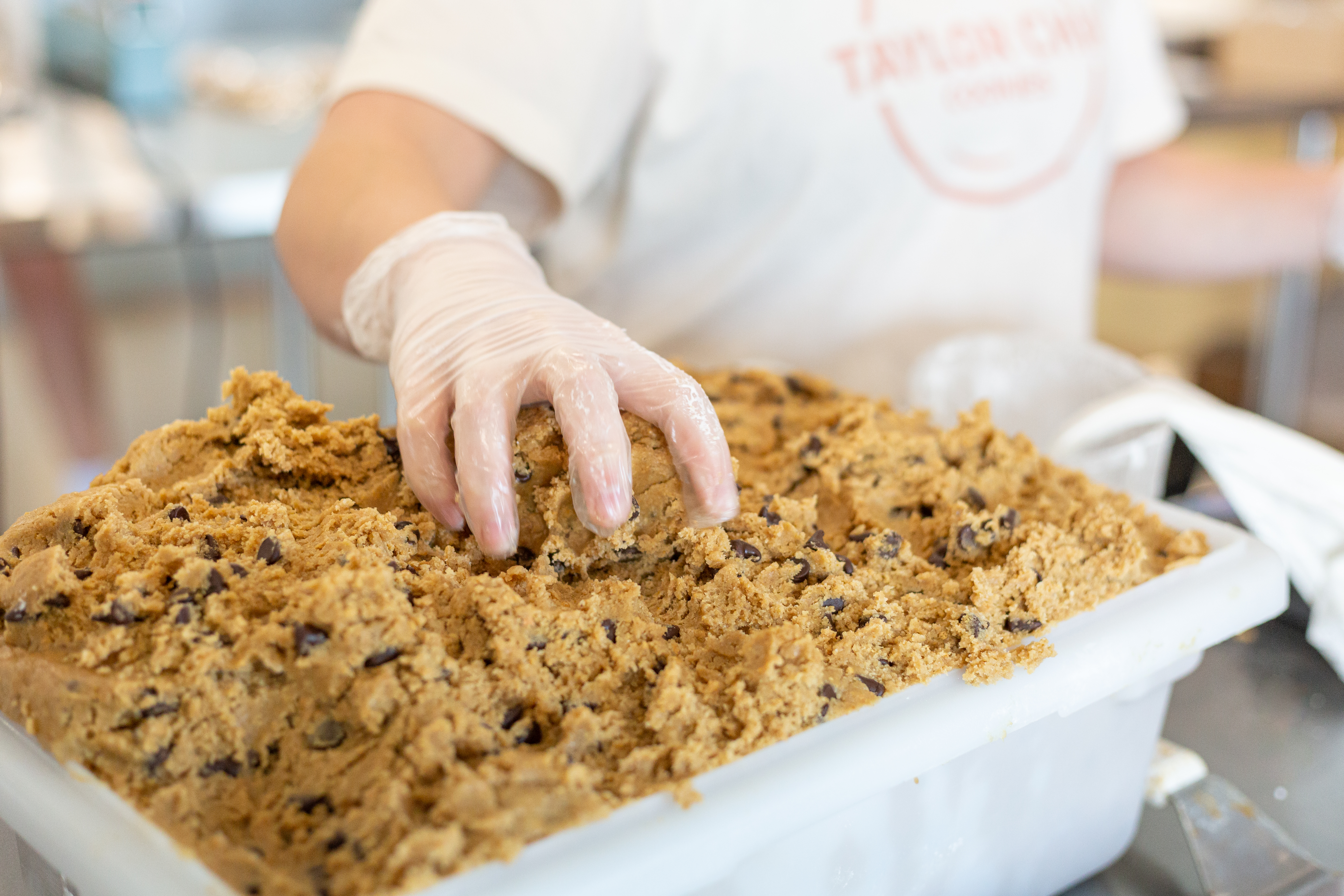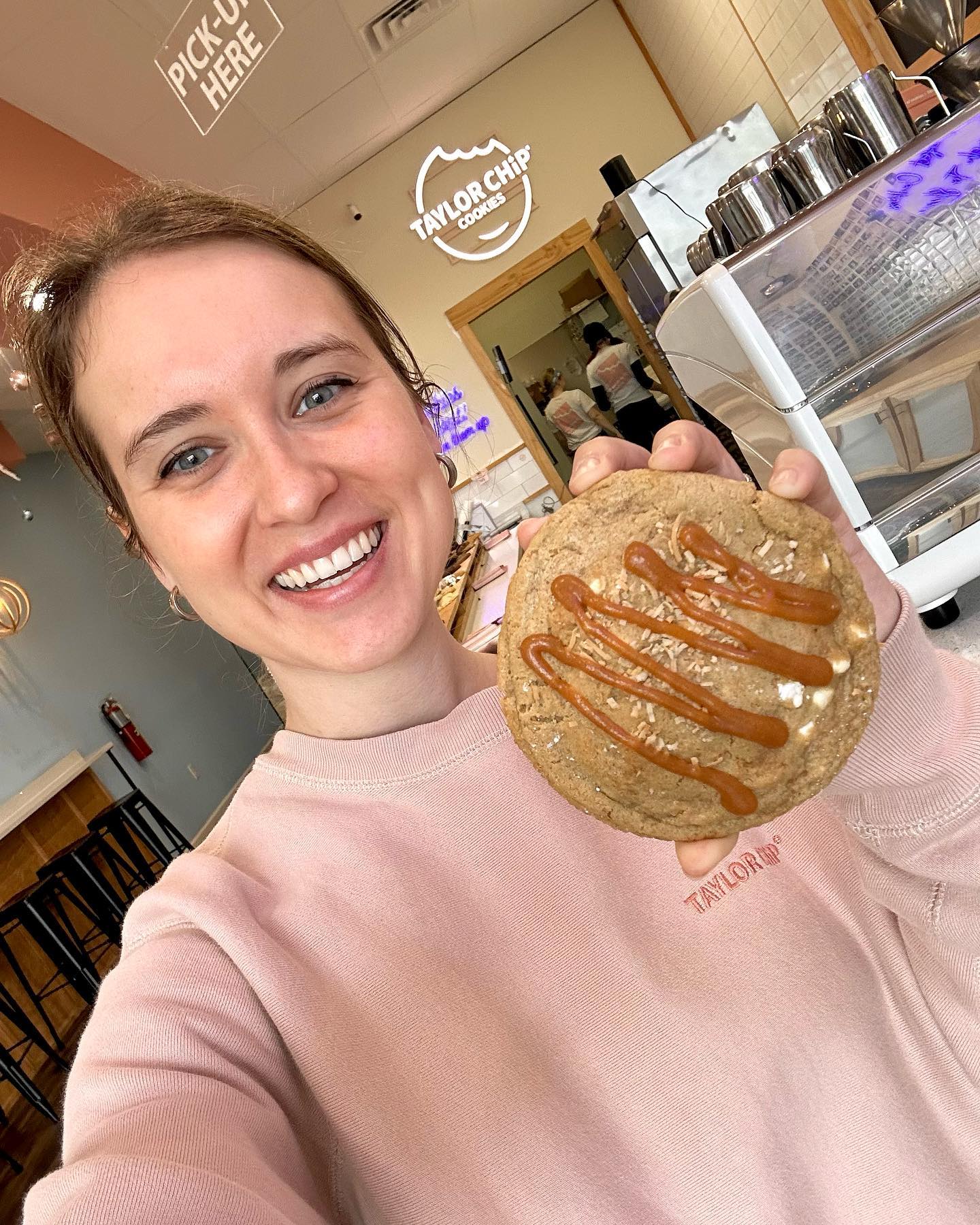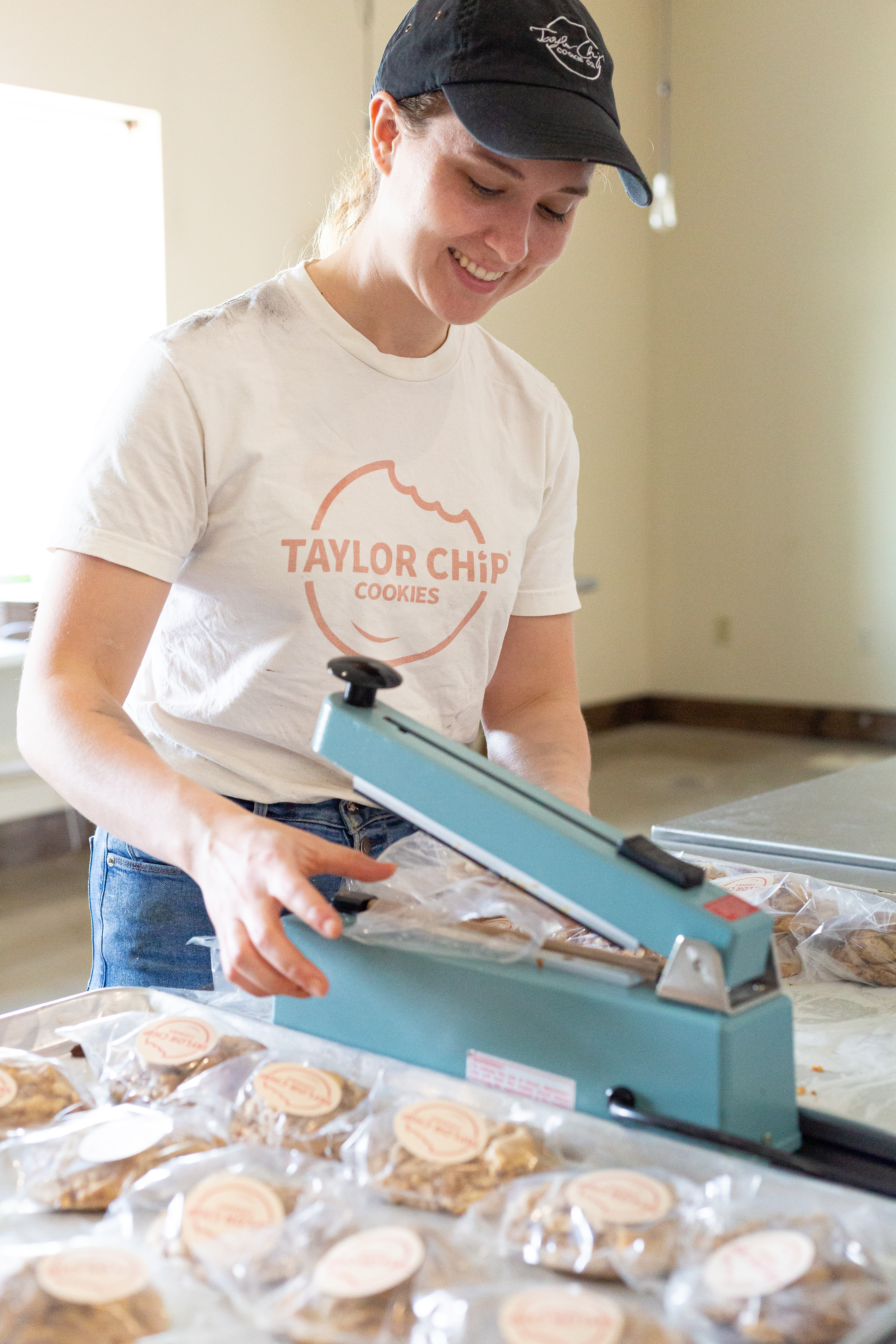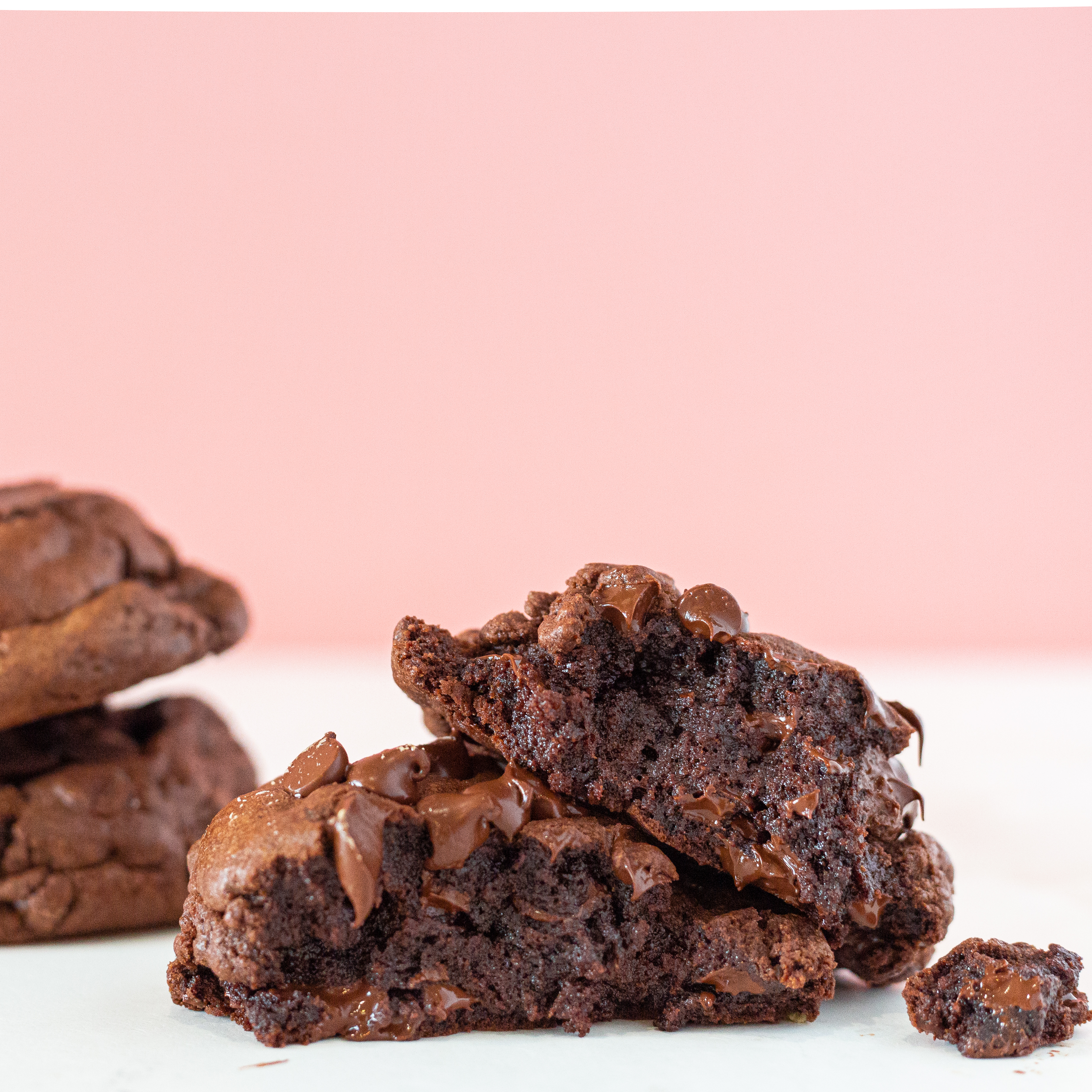To make gluten-free shortbread cookies, you'll need gluten-free flour, room-temperature butter, powdered sugar, and vanilla extract. Mix the flour and butter until coarse crumbs form, then add sugar and vanilla until the dough comes together. Roll the dough to 1/4-inch thickness, cut into shapes, and place on a parchment-lined baking sheet. Bake at 350°F for 10-12 minutes, until the edges are lightly golden. Let cookies cool on the baking sheet for a few minutes before transferring to a wire rack. Chilled dough guarantees flaky texture, and decorating with powdered sugar or chocolate drizzle enhances the flavor.
Key Takeaways
- Use gluten-free flour blends like Bob's Red Mill 1-to-1 or King Arthur Measure for Measure for best results.
- Mix room-temperature butter with gluten-free flour until coarse crumbs form, then add sugar and vanilla extract.
- Roll dough to 1/4-inch thickness, cut shapes, and bake at 350°F for 10-12 minutes until edges are lightly golden.
- Chill dough before baking to ensure a tender and flaky texture.
- Cool cookies on a wire rack post-baking and decorate with powdered sugar or chocolate drizzle.
Introduction to Gluten-Free Shortbread
When you switch to gluten-free baking, you'll enjoy benefits like improved digestion and more inclusive treats for friends with dietary restrictions. Achieving the perfect texture in shortbread is essential, and it's entirely possible with gluten-free ingredients. You'll find that these cookies can be just as buttery and crumbly as their traditional counterparts.
Benefits of Gluten-Free Baking
Embracing gluten-free baking not only caters to those with dietary restrictions but also opens up a world of delicious and healthier alternatives, like the delightful gluten-free shortbread. Crafting a gluten-free shortbread recipe involves using gluten-free flour and simple ingredients, ensuring that everyone can enjoy these delectable treats. Baking gluten-free doesn't mean compromising on flavor; in fact, gluten-free shortbread cookies can be just as tasty and satisfying as their traditional counterparts.
When you choose to bake gluten-free, you're making a mindful decision to support those with celiac disease or gluten sensitivities. Gluten-free baking encourages the use of diverse ingredients, which often results in gluten-free baked goods that are both flavorful and nutritious. Gluten-free cookies, including the gluten-free version of shortbread, can offer more than just a safe option for those with dietary needs—they can be a delightful indulgence for anyone.
The process of baking gluten-free also fosters creativity in the kitchen, as it invites experimentation with different gluten-free flours and ingredients. This approach not only broadens your culinary skills but also introduces you to an array of gluten-free recipes that can become new family favorites.
Importance of Texture in Shortbread
Achieving the perfect texture in gluten-free shortbread is crucial to replicate the classic crumbly and buttery experience. The texture is what distinguishes shortbread from other cookies, and getting it right requires attention to detail. When working with gluten-free shortbread dough, you need to focus on creating a soft dough that will bake into crumbly yet flaky cookies.
To accomplish this, consider the following:
- Flour choice: Use a gluten-free baking flour that's labeled as measure for measure. This guarantees the correct balance of ingredients to mimic traditional flour.
- Butter temperature: Always use room-temperature butter. It blends better with the flour, contributing to the dough's consistency and the baked cookies' flaky texture.
- Mixing technique: Don't overmix the dough. Overmixing can lead to tough cookies rather than the desired crumbly texture.

Choose Your Own Delightfully Perfect Cookies.
With almost 30 flavors to choose from, you can make your box as unique as you are.
Ingredients for Gluten-Free Shortbread
To make gluten-free shortbread, you'll need a quality gluten-free flour blend to replace traditional wheat flour. Butter is essential for that classic rich taste, but dairy-free alternatives work well if you have dietary restrictions. Don't forget to choose your sweeteners and flavorings carefully to guarantee they complement the texture and taste of your cookies.
Gluten-Free Flour Blends
For delicious gluten-free shortbread, you'll need to choose the right gluten-free flour blend that mimics the texture and flavor of traditional wheat flour. A good blend often combines several types of gluten-free flours to achieve the perfect balance. For instance, combining almond flour, white rice flour, and arrowroot powder can create a texture that's close to traditional shortbread.
When selecting your gluten-free flour blend, consider these options:
- Bob's Red Mill Gluten-Free 1-to-1 Baking Flour - This mix includes a blend of rice flour, sorghum flour, potato starch, and tapioca flour, providing a reliable base for your recipe.
- Pillsbury Gluten-Free Flour - Known for its consistency, this blend works well in recipes that require a tender crumb.
- King Arthur Gluten-Free Measure for Measure Flour - This option is versatile and great for achieving the desired texture in shortbread cookies.
Remember to add kosher salt and confectioners sugar to your mixture. These ingredients enhance the flavor and texture, ensuring your gluten-free shortbread cookie recipe tastes just right. By carefully selecting and combining these components, you'll create cookies that are virtually indistinguishable from their gluten-containing counterparts.
Butter and Dairy-Free Alternatives
When making gluten-free shortbread, you can often substitute butter with dairy-free alternatives like coconut oil or vegan margarine to accommodate dietary restrictions. Start by selecting a high-quality vegan butter, as it impacts the texture and flavor of your gluten-free shortbread cookies. Combine the vegan butter with gluten-free flour and powdered sugar in a mixing bowl. This forms the base of your classic recipe.
Sweeteners and Flavorings
Enhance your gluten-free shortbread with a variety of sweeteners and flavorings to create a truly delightful treat. Start with unsalted butter, which forms the base of your cookies, adding richness and a creamy texture. Next, incorporate granulated sugar to provide the perfect amount of sweetness and help achieve that desirable crumbly texture.
For flavorings, vanilla extract is a classic choice, offering a warm, familiar taste. But why stop there? Almond extract can add a subtle, nutty undertone, while lemon zest or orange zest can introduce a fresh, citrusy twist. If you prefer a deeper, more robust sweetness, consider using a touch of maple syrup.
To guarantee your shortbread has the right consistency, use a gluten-free flour mix. A pinch of kosher salt balances the sweetness and amplifies all the flavors. Finally, for an extra special touch, consider a chocolate drizzle on top.
Here are some top flavor combinations:
- Vanilla extract and lemon zest – a classic mix with a zingy finish.
- Almond extract and orange zest – a nutty and citrusy blend.
- Maple syrup and chocolate drizzle – rich, sweet, and decadent.
These ingredients will raise your gluten-free shortbread to a new level of deliciousness.
Gluten-Free Shortbread Recipe
To make your gluten-free shortbread, start by gathering all the ingredients listed earlier. Follow the step-by-step instructions carefully to guarantee your cookies come out perfectly. By sticking to the recipe, you'll achieve that classic buttery texture and flavor without the gluten.
Ingredients List
Gather these simple ingredients to whip up your delicious gluten-free shortbread cookies. You'll need just a handful of basic items that you probably already have in your pantry. Let's dive straight into the essentials.
- Gluten-Free Flour Blend: Confirm you have a high-quality gluten-free flour blend. This forms the base of your cookies, giving them that classic shortbread texture.
- White Sugar: You'll need some white sugar to sweeten your butter cookies just right.
- Butter: Use unsalted butter, softened to room temperature. This is vital for achieving that melt-in-your-mouth consistency.
Next, grab a teaspoon of vanilla extract for that subtle flavor boost. For mixing, you'll want to use a stand mixer fitted with a paddle attachment. This helps to evenly combine the ingredients without overworking the dough.
You'll also need a piece of parchment paper to line your baking sheet. This prevents sticking and makes cleanup easier. Once baked, transfer your cookies to a wire rack to cool completely. Finally, store your gluten-free shortbread cookies in an air-tight container to keep them fresh.
With these ingredients on hand, you're ready to move on to the next step in creating your delightful cookies.
Step-by-Step Instructions
Begin by preheating your oven to 350°F (175°C) and lining a baking sheet with parchment paper. Start making the shortbread dough by combining the gluten-free flour and butter in a large bowl. Mix until the mixture resembles coarse crumbs. Add sugar and vanilla extract, then continue mixing until the dough comes together and forms a buttery gluten-free ball.
Next, transfer the dough to a floured surface. Roll it out to about 1/4-inch thickness, ensuring it's even. Use cookie cutters to cut out shapes from the dough, then place the cookies on the parchment-lined baking sheet in a single layer. Gather any leftover dough, re-roll it, and cut out more shapes until all the dough is used.
Once all the cookies are on the baking sheet, place it in the oven. The baking time for these classic shortbread cookies is around 10-12 minutes, or until the edges are lightly golden. Keep an eye on them to avoid over-baking. After removing them from the oven, allow the gluten-free shortbread cookies to cool on the baking sheet for a few minutes before transferring them to a wire rack to cool completely.
Tips for Achieving the Perfect Texture
To achieve the perfect texture for your gluten-free shortbread cookies, start by chilling the dough thoroughly before baking. Pay close attention to the baking temperature and time to guarantee they don't become too dry or undercooked. Finally, let the cookies cool completely before handling them to prevent crumbling.
Chilling the Dough
Chilling the dough is essential for achieving a tender and flaky texture in your gluten-free shortbread cookies. When you chill the cookie dough, it allows the gluten-free flour mix to hydrate properly, resulting in a more cohesive ball of dough. This step also helps the buttery shortbread maintain its shape when baked, preventing it from spreading too much on the prepared baking sheet.
Here are three key reasons why you should always chill your gluten-free cookie dough:
- Consistency: Chilling guarantees that the fat solidifies, which leads to a more uniform texture.
- Flavor Development: Allowing the dough to rest enhances the flavors, giving your cookies a richer taste.
- Ease of Handling: A cold dough is easier to roll out and cut, making the baking process smoother.
To chill the dough, wrap it tightly in plastic wrap and place it in the refrigerator for at least an hour. If you're in a hurry, you can chill it in the freezer for about 30 minutes. Once chilled, roll out the dough between two sheets of parchment paper to prevent sticking. Then, use a cookie cutter to shape your cookies and place them on a parchment-paper-lined baking sheet.
Baking Temperature and Time
Achieving the perfect texture for your gluten-free shortbread cookies hinges on baking them at the right temperature for the ideal amount of time. To start, preheat your oven to 325°F (163°C). This baking temperature is vital for developing that classic crumbly yet buttery texture while preventing the cookies from spreading too much.
Line your cookie sheets with parchment paper to guarantee even baking and easy cleanup. Place the cookie sheets on the middle rack of your oven. This positioning encourages uniform heat distribution, which is necessary for these delicate gluten-free cookies.
Baking time is just as important. Aim to bake your gluten-free shortbread cookies for 20-30 minutes. Keep an eye on them starting at the 20-minute mark. You're looking for a light golden color around the edges. Gluten-free flour tends to behave differently than regular flour, so slight adjustments might be necessary.
Resist the temptation to open the oven door frequently, as this can disrupt the temperature and affect the cookies' texture.
Cooling and Handling the Cookies
Once your gluten-free shortbread cookies are out of the oven, let them cool on the baking sheet for about 10 minutes to firm up. This initial cooling period helps the cookies set, making them easier to handle without breaking. After this, carefully transfer them to a wire rack using a spatula and pieces of parchment paper to avoid damaging their delicate texture.
To achieve the perfect texture for your gluten-free shortbread cookies, keep these tips in mind:
- Cool Completely: Let the cookies cool entirely on the wire rack. This guarantees they maintain their classic shortbread crispness.
- Thinner Cookies: If you prefer thinner cookies, reduce the cooling time slightly before transferring them. This helps them firm up without becoming too hard.
- Crunchy Variants: For crunchy gluten-free snowballs or other cookie recipes, make certain they cool completely before storing to prevent moisture retention.
When handling gluten-free and dairy-free shortbread cookies, be gentle. These cookies are more fragile than their gluten counterparts. Using pieces of parchment paper can help you move them safely. By letting your cookies cool fully, you'll enjoy the best texture, whether you're aiming for classic shortbread or experimenting with different variations.
Decorating and Serving Suggestions
To raise your gluten-free shortbread cookies, try dusting them with powdered sugar or drizzling them with melted chocolate for added sweetness. Pair these delightful treats with a cup of tea or coffee to create a perfect afternoon snack. These simple yet effective decorations and beverage pairings will impress your guests and improve the overall experience.
Dusting with Powdered Sugar
Why not add a touch of elegance to your gluten-free shortbread cookies by dusting them with powdered sugar? This simple step can transform your cookies from ordinary to extraordinary, making them perfect for any occasion. Once you've followed the basic recipe, which includes key ingredients like gluten-free baking flour, you'll want to guarantee your cold gluten-free shortbread is ready for decoration. Using powdered sugar not only enhances the visual appeal but also complements the buttery flavor of the cookies.
To achieve the best results, consider these three tips:
- Sift the Powdered Sugar: Use a fine mesh sieve to dust the cookies evenly, guaranteeing a light and delicate coating.
- Cool the Cookies Completely: Make sure your cookies are at room temperature before dusting to prevent the sugar from melting.
- Store Properly: Place your decorated cookies in a freezer-safe container to maintain their freshness and appearance.
These gluten-free shortbread cookies, shaped with your favorite cookie cutters, are perfect for cookie exchanges or as a treat for yourself. Mixing the dough at medium-high speed guarantees a smooth texture, and storing them properly will make them last longer.
Drizzling with Chocolate
Raise your gluten-free shortbread cookies higher by drizzling them with decadent chocolate, adding a rich and luxurious touch. Start by melting gluten-free chocolate chips in a microwave-safe bowl, heating in 30-second intervals and stirring in between until smooth. Use parchment paper to line a baking sheet, then place your shortbread cookies on it. This will make cleanup easier and guarantee your cookies don't stick.
Once the chocolate is melted, let it cool slightly to avoid making a mess. Use a small spoon or a piping bag to drizzle the melted chocolate over your gluten-free shortbread. You can create detailed patterns or keep it simple with a few quick strokes. The contrast between the buttery shortbread and the rich chocolate raises your cookies to a new level of deliciousness.
For an extra touch, sprinkle a bit of sea salt over the chocolate drizzle before it hardens. This adds a delightful crunch and balances the sweetness. Once the chocolate has set, your gluten-free cookies are ready to serve.
Pairing with Beverages
Pairing your gluten-free shortbread cookies with the right beverage can improve your dessert experience to new heights. Whether you've made a simple recipe or opted for gluten-free chocolate chip shortbread, choosing the perfect drink can make all the difference. Here are three excellent beverages to complement your cookies:
- Tea: A classic choice, tea's subtle flavors balance the sweetness of shortbread. Opt for black tea if you've sprinkled coarse sugar on your cookies, or herbal tea if you've dipped them in dark chocolate.
- Coffee: The rich, robust flavor of coffee pairs wonderfully with the buttery texture of gluten-free shortbread cookies. Espresso or a strong brew can cut through the sweetness, creating a delightful contrast.
- Milk: Sometimes the simplest options are the best. A cold glass of milk enhances the creamy, melt-in-your-mouth quality of the cookies, making it a nostalgic favorite.
Store your cookies in a glass container to keep them fresh, or a freezer container if you plan to enjoy them over time. If you have raw cookie dough left, you can freeze it and bake fresh cookies as needed. Enjoying these treats with the right beverage raises the experience, making your handful of ingredients go a long way.
Variations and Flavor Ideas
You can easily enhance your gluten-free shortbread cookies by experimenting with different flavors and ingredients. Try adding lemon zest and lavender for a revitalizing twist, or mix in chopped nuts and seeds for extra crunch. Dried fruit and a sprinkle of spices can also bring a delightful warmth to your cookies.
Lemon Zest and Lavender
Enhance your gluten-free shortbread cookies with the bright, citrusy kick of lemon zest and the delicate floral notes of lavender. Start by adding these flavors to your dry ingredients: combine the gluten-free flour, ¼ teaspoon salt, and lemon zest. The zest, made by finely grating lemon peel, will infuse your dough with a revitalizing aroma. Lavender, when used sparingly, adds a subtle yet sophisticated twist. Simply mix a teaspoon of dried lavender buds into the flour mixture.
To guarantee the best mouth texture, follow these vital steps:
- Mix dry ingredients thoroughly: This guarantees the lemon zest and lavender are evenly distributed throughout the dough.
- Chill the dough: Wrap it in a sheet of parchment paper and refrigerate for at least 30 minutes. A bit of water can be added if the dough feels too crumbly.
- Bake evenly: Spread the cookies evenly on a baking sheet, keeping a small space between them to allow for expansion.
Baking your gluten-free shortbread cookies with lemon zest and lavender is an easy way to heighten their flavor profile. The result is a delightful balance of citrus and floral notes, perfect for any occasion.
Chopped Nuts and Seeds
Incorporate a variety of chopped nuts and seeds into your gluten-free shortbread cookies to introduce a satisfying crunch and layers of rich, nutty flavors. These additions can enhance the texture and taste of your cookies, making each bite delightful. Almonds, pecans, walnuts, and sunflower seeds work wonderfully in a gluten-free shortbread recipe. To start, prepare your gluten-free whipped shortbread cookies by using gluten-free all-purpose flour as your base.
Add about half a cup of your chosen chopped nuts and seeds to the dough. Don't forget to include a teaspoon of salt to balance the sweetness and enhance the nutty flavors. If the dough seems too sticky, incorporate additional gluten-free flour until you achieve the desired consistency. After preparing the dough, let it rest for a few minutes before baking to allow the flavors to meld together.
When ready, shape the dough into small rounds and place them on a baking sheet lined with parchment paper. Bake according to your gluten-free cookie recipe's instructions. The result will be a batch of crunchy, flavorful cookies that are perfect for any occasion.
Dried Fruit and Spices
Adding dried fruit and spices to your gluten-free shortbread cookies can enhance their flavor profile, offering a delightful twist on the classic treat. Dried fruit like cranberries, cherries, or apricots adds a natural sweetness and chewy texture that contrasts beautifully with the crispness of the cookies. Spices such as cinnamon, nutmeg, or cardamom can introduce warm, aromatic notes, elevating each bite to a new level of enjoyment.
To incorporate these ingredients effectively, follow these tips:
- Mix Thoroughly: Verify dried fruit and spices are evenly distributed throughout the dough to achieve a consistent flavor in every cookie.
- Balance Flavors: Use a pinch of kosher salt to balance the sweetness, enhancing the overall taste without overpowering it.
- Use Parchment Paper: Line your baking sheets with parchment paper to prevent sticking and verify an even bake.
Consider adding mini chocolate chips to your gluten-free snowball cookies for a delightful variation. Remember, this gluten-free cookie recipe doesn't require a leavening agent, allowing the flavors of dried fruit and spices to shine through.
Storing and Freezing Gluten-Free Shortbread
To keep your gluten-free shortbread fresh, store them in airtight containers to prevent moisture and air exposure. For longer storage, you can freeze the cookies by placing them in a single layer on a baking sheet before transferring them to a freezer-safe bag. When you're ready to enjoy them, simply let the cookies thaw at room temperature for a few hours.
Airtight Containers
Storing your gluten-free shortbread cookies in airtight containers guarantees they stay fresh and delicious for longer. Using airtight containers helps maintain their ideal texture and flavor, whether you're dealing with gluten-free sugar cookies, gluten-free chocolate cookies, or even gluten-free gingerbread. When you've put effort into baking, you'll want to make certain your treats remain as delightful as the day they were made.
Here's why airtight containers are essential:
- Moisture Control: They keep unwanted moisture out, preventing your gluten-free shortbread from becoming soggy.
- Odor Protection: They shield your cookies from absorbing any external odors, preserving their unique taste.
- Prolonged Freshness: By minimizing air exposure, they help maintain the cookies' freshness for a longer time.
You can use these containers not just for gluten-free shortbread but also for storing other treats like gluten-free oatmeal cookies, gluten-free peanut butter cookies, gluten-free snowballs, and gluten-free chocolate chip cookies. With airtight containers, even delicate cookies like gluten-free snowballs retain their texture. Remember, the key to extending the shelf life of your gluten-free delights lies in proper storage.
Freezing Tips and Thawing Instructions
Freezing your gluten-free shortbread is an excellent way to enjoy these delightful treats whenever you crave them. To start, let the cookies cool completely. Once cooled, place them in a single layer on a baking sheet lined with parchment paper. This prevents sticking and makes handling easier. After they're frozen, transfer the cookies into an airtight container or freezer bags to maintain freshness.
For best results, verify the gluten-free flour in your recipe is well-incorporated with the butter and sugar, as this enhances the texture upon defrosting. If you're storing the dough instead, shape it into logs, wrap in parchment paper, and then place it in freezer bags or an airtight container.
When you're ready to enjoy your gluten-free shortbread, follow these thawing instructions: remove the cookies from the freezer and let them sit at room temperature for about 30 minutes. If you prefer a fresh-baked feel, you can warm them in the oven at 300°F for a few minutes.
The Taylors and Taylor Chip
Sara and Dougie Taylor's journey into the world of baking began in 2015 when their shared love for sweets turned casual baking sessions into a passionate obsession. As their relationship blossomed, so did their baking skills.
Here are three fundamental elements of their baking success:
- Experimentation: They weren't afraid to try new recipes and techniques.
- Precision: Using the exact ingredients and methods was essential.
- Passion: Their love for baking and each other fueled their creativity.
Their commitment to quality and innovation laid the foundation for what would eventually become Taylor Chip.
The Taylor Chip Double Chocolate Brownie Cookie
The Taylor Chip Double Chocolate Brownie Cookie embodies the perfect fusion of a rich brownie and a classic cookie, offering an indulgent experience with every bite. Crafted with a double portion of rich, intense Dutch processed cocoa, these cookies in chocolate are made even more delectable with local chocolate from Lititz, Pennsylvania. Each cookie features unbleached enriched wheat flour, local butter, free-range eggs, and locally extracted vanilla, guaranteeing premium quality.
Frequently Asked Questions
Can I Use Almond Flour as a Substitute in This Gluten-Free Shortbread Recipe?
Yes, you can use almond flour as a substitute. It'll give the cookies a slightly different texture and flavor, but they'll still be delicious. Just make sure to adjust any other ingredients if needed.
How Can I Make These Cookies Dairy-Free as Well?
You can make these cookies dairy-free by using coconut oil or vegan butter instead of regular butter. Just swap the same amount, and you'll still get delicious, crumbly cookies without any dairy.
Are There Any Nut-Free Alternatives for Gluten-Free Shortbread?
You can use oat flour or rice flour as nut-free alternatives. They maintain the texture and taste without compromising the quality. Just substitute them in equal amounts and enjoy your nut-free, gluten-free cookies!
What Is the Shelf Life of Homemade Gluten-Free Shortbread Cookies?
Your homemade gluten-free shortbread cookies will last about one week when stored in an airtight container at room temperature. If you refrigerate them, you can extend their shelf life to about two weeks.
Can I Use a Sugar Substitute Like Stevia or Erythritol in This Recipe?
You can use sugar substitutes like stevia or erythritol. Just remember, they may affect the texture and taste. Experiment with small batches to find the balance you prefer. Adjust other ingredients if needed.
Conclusion
With these tips and recipes, you'll easily create delicious gluten-free shortbread cookies. Remember to use high-quality ingredients, follow measurements precisely, and experiment with flavors to find your favorite variations. Proper storage will keep your cookies fresh and ready to enjoy. Whether you're serving them plain or decorated, these cookies are sure to delight. Happy baking!











